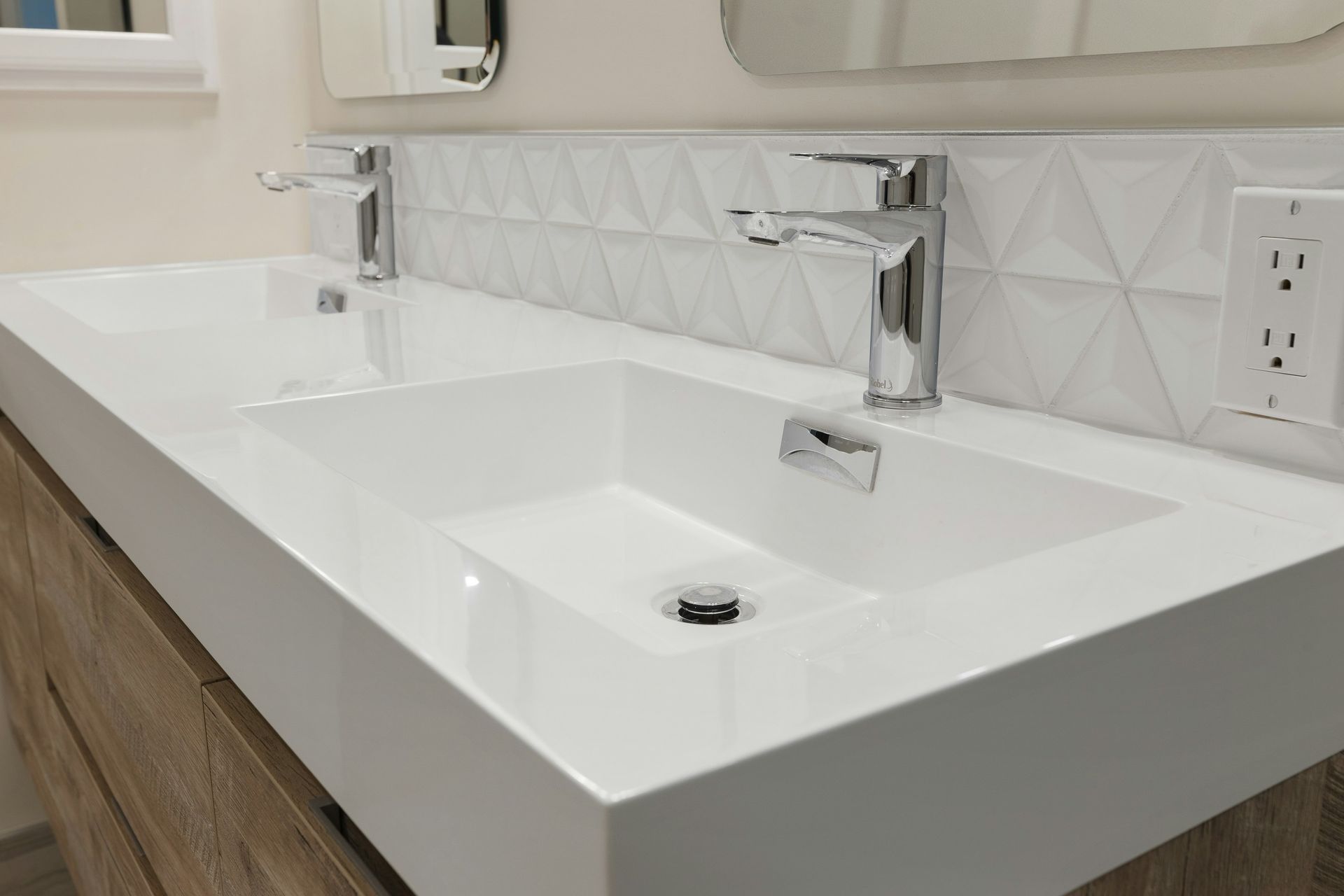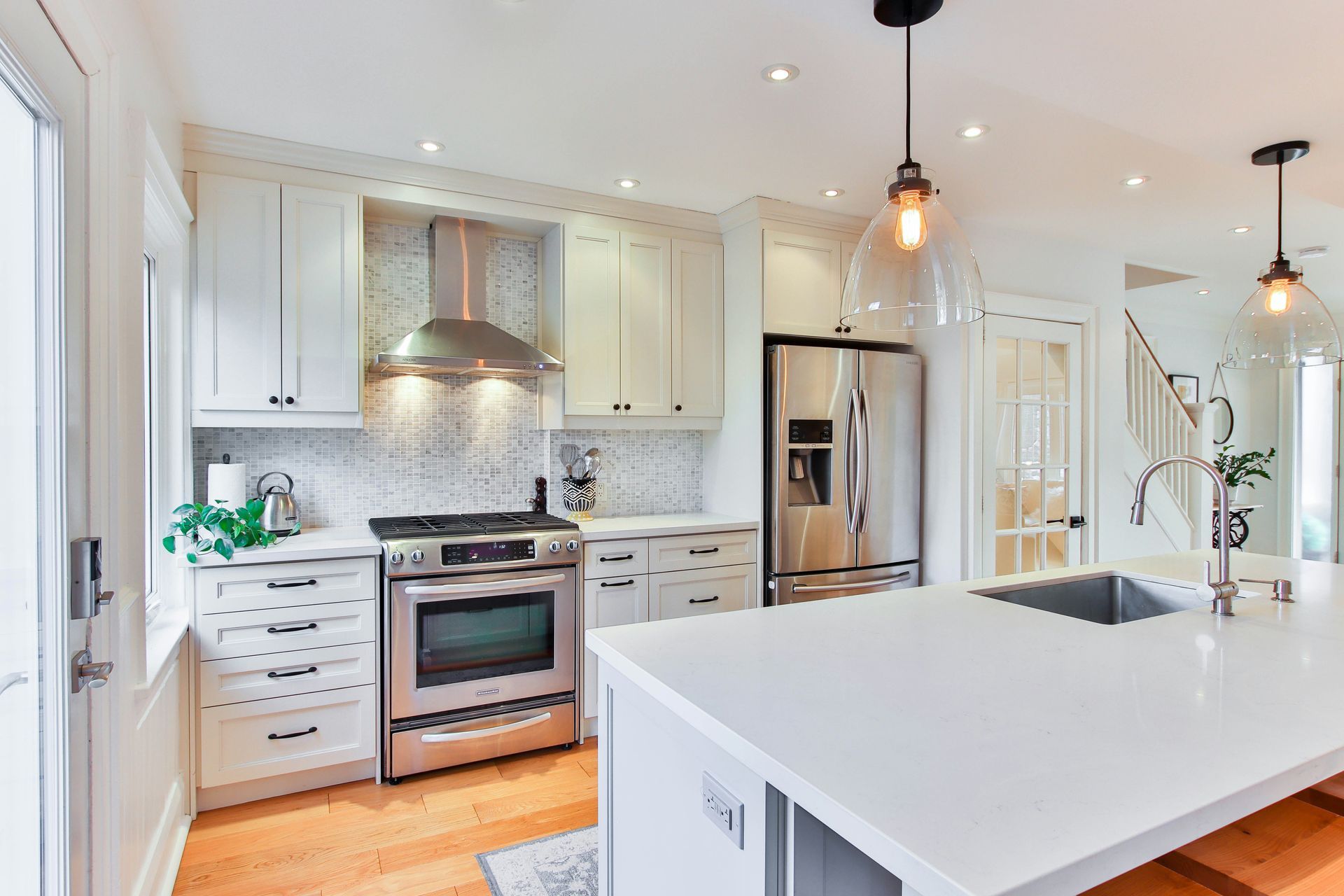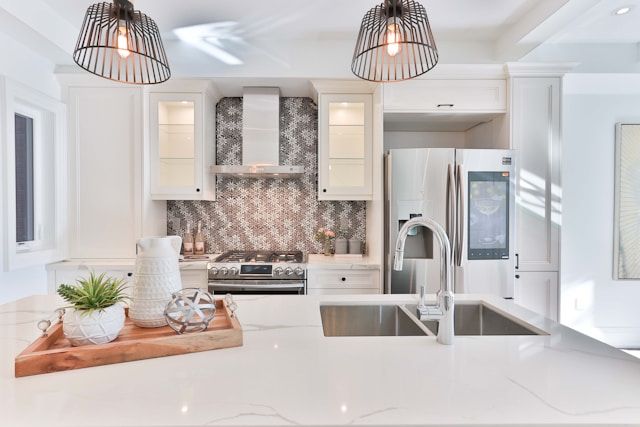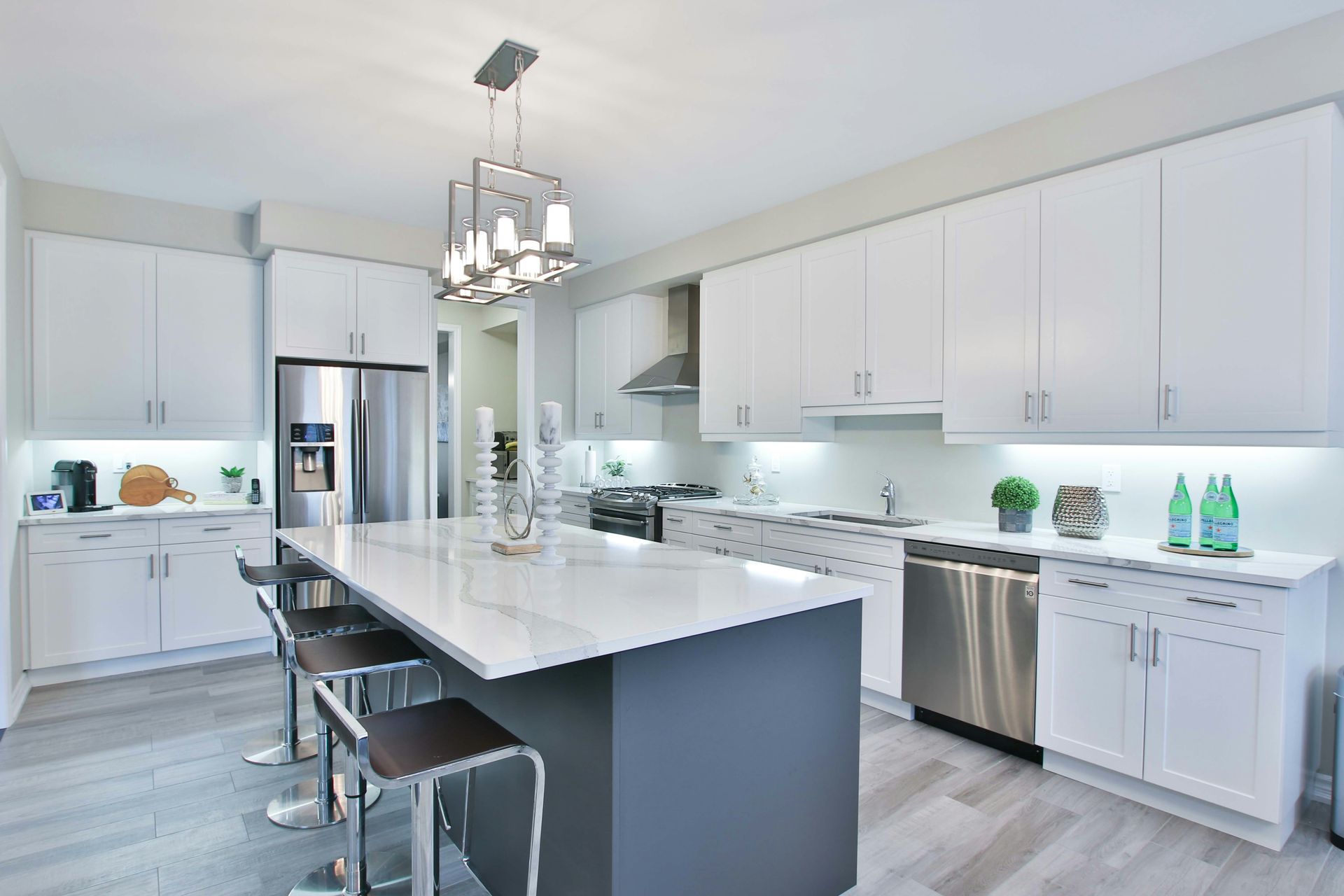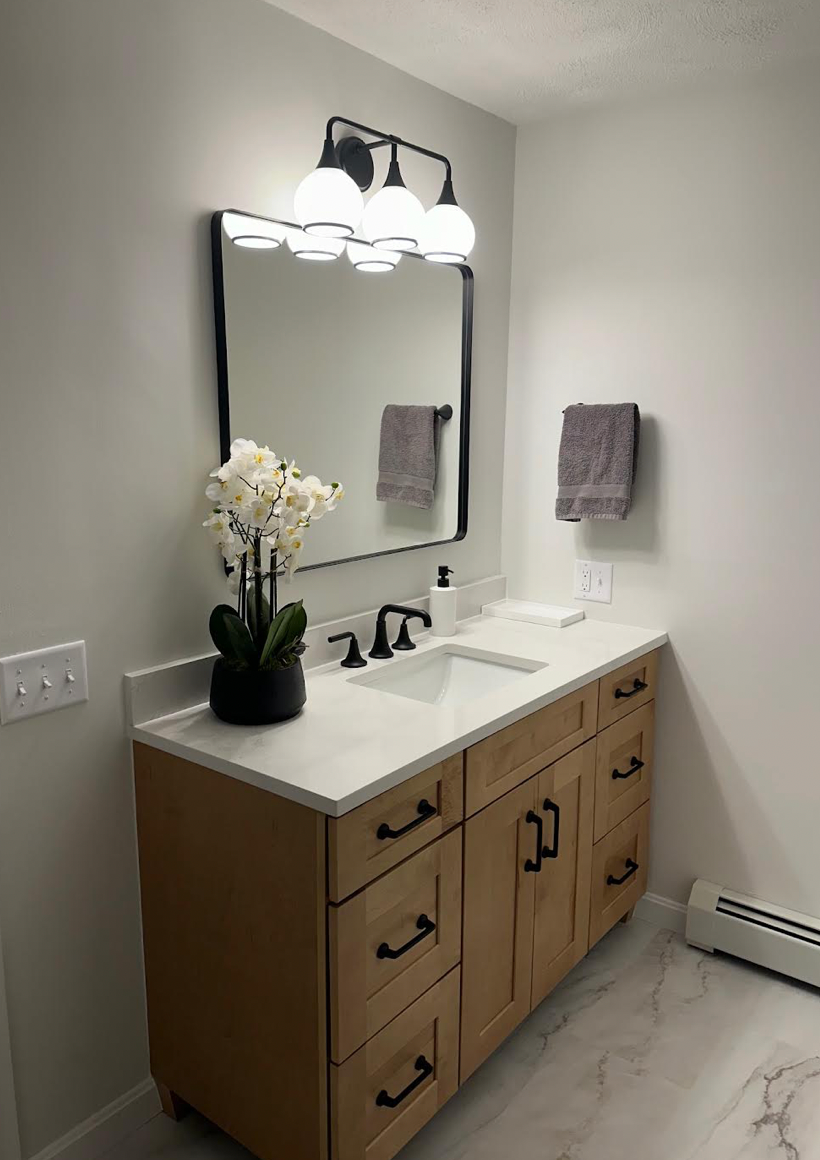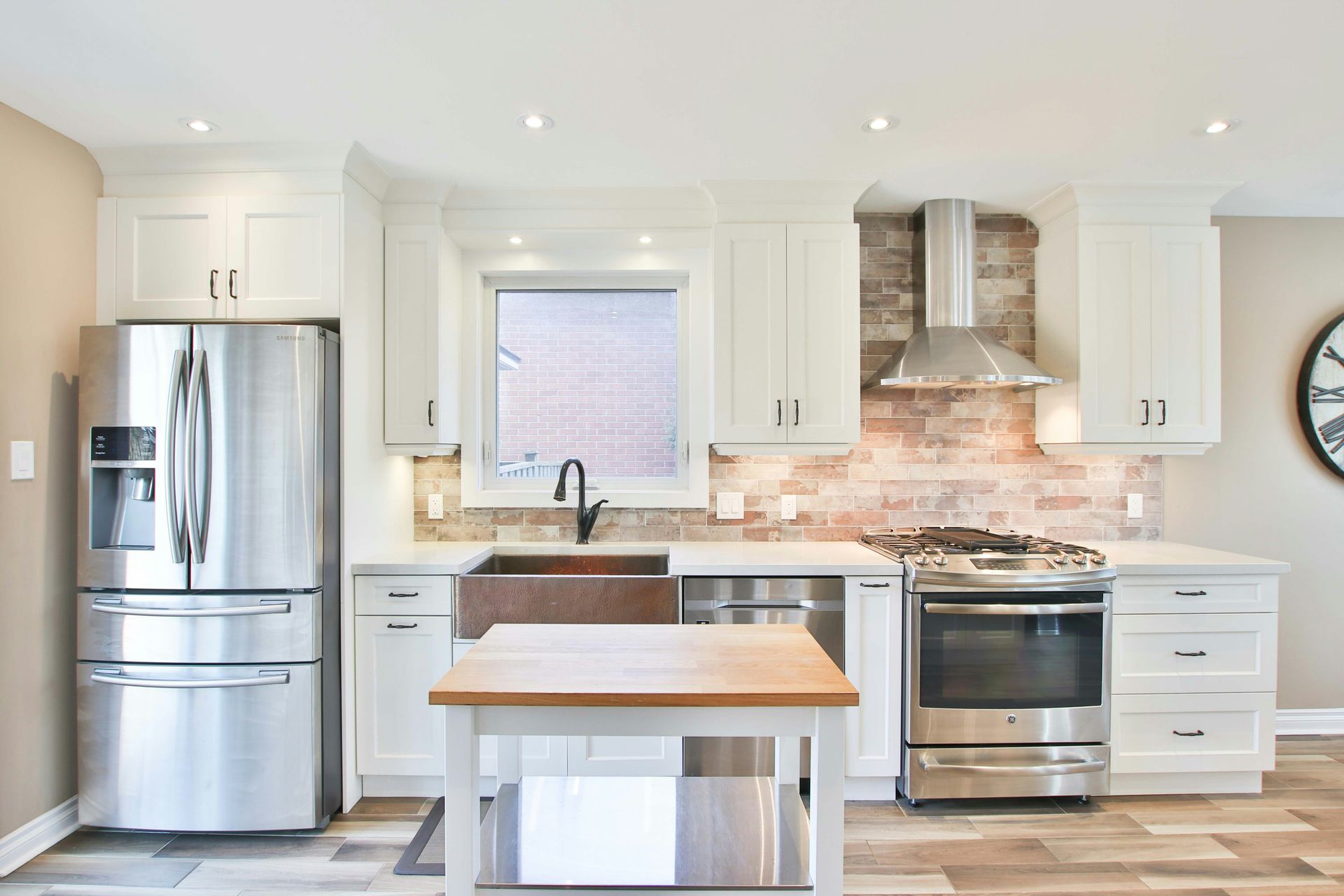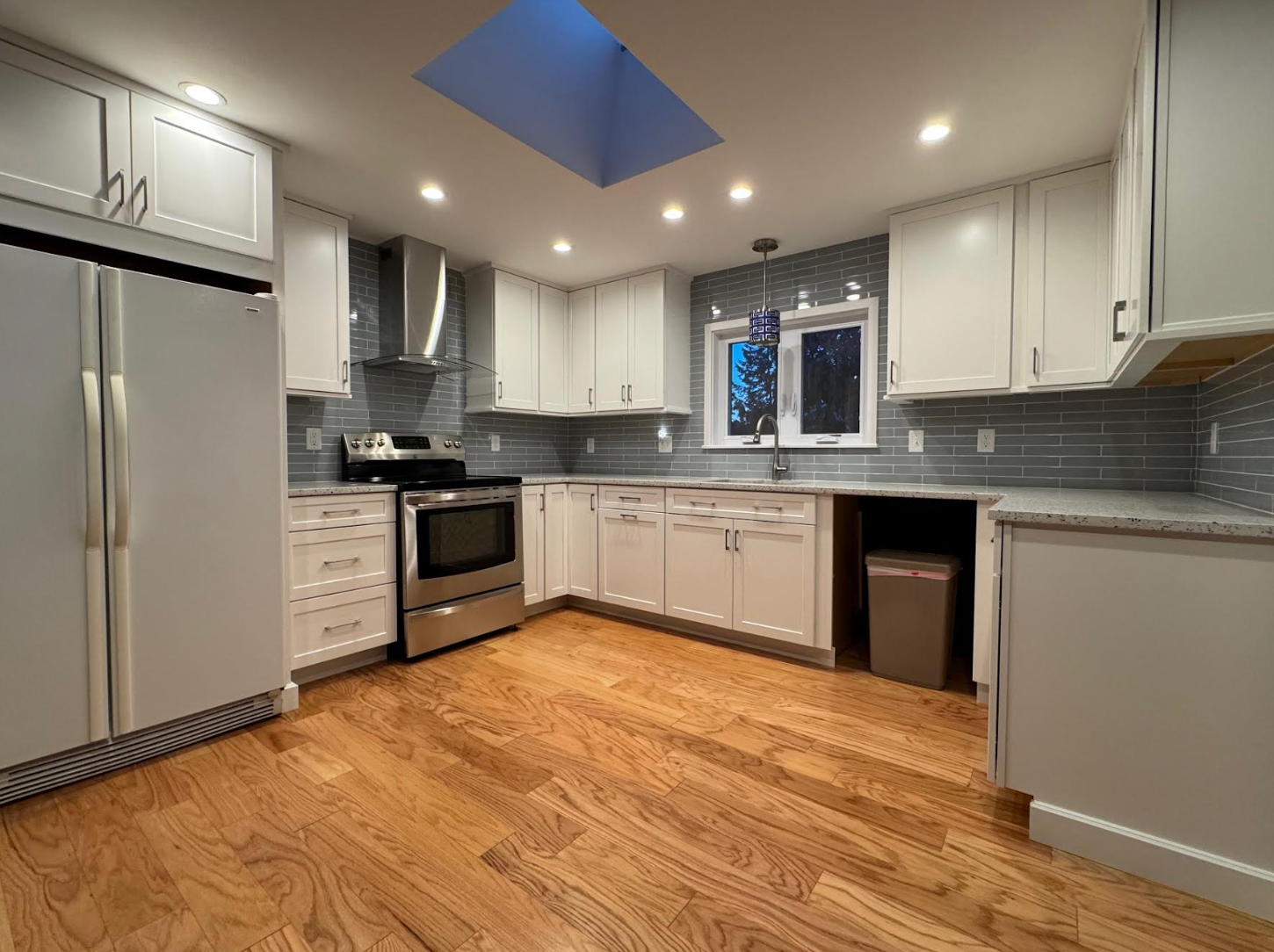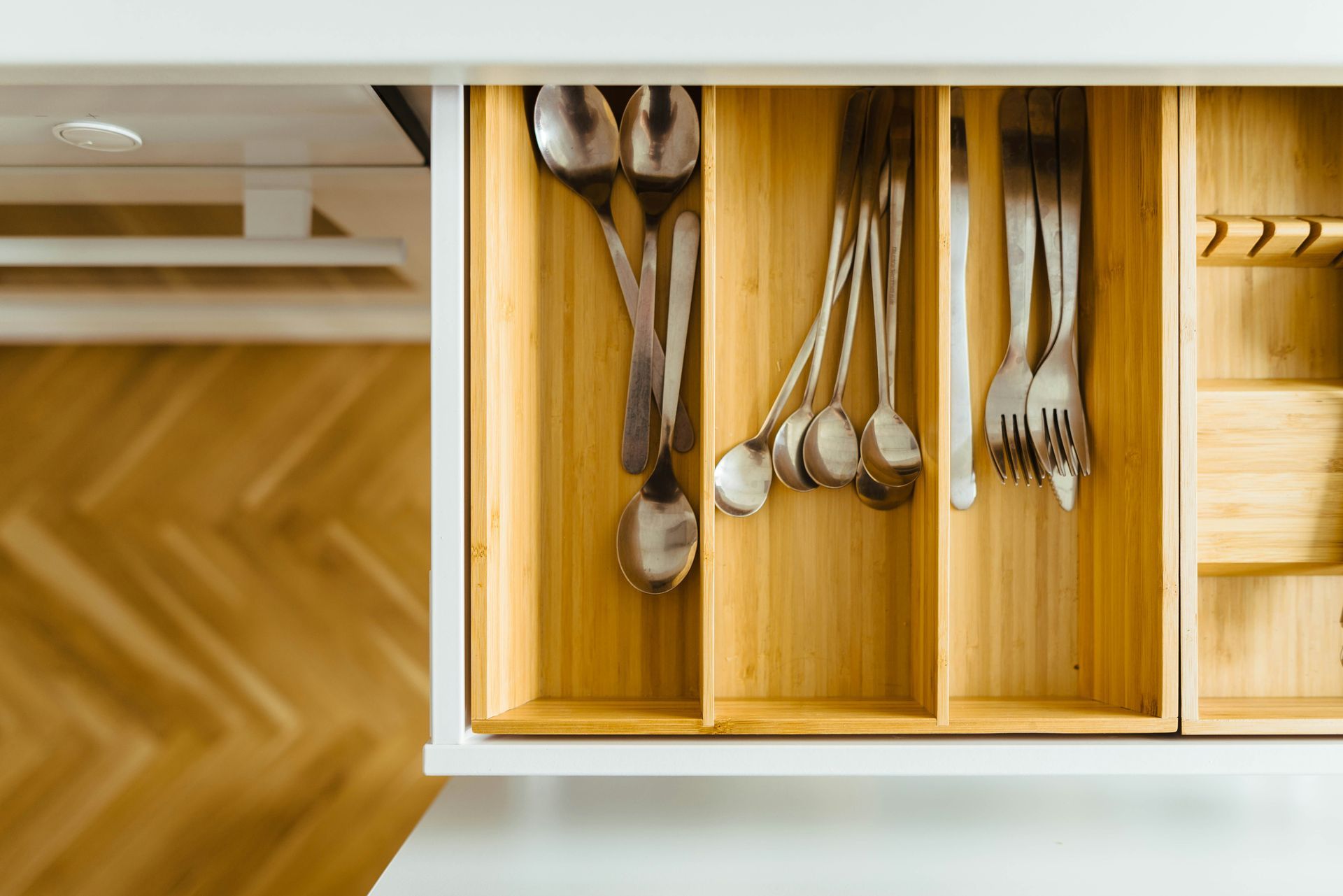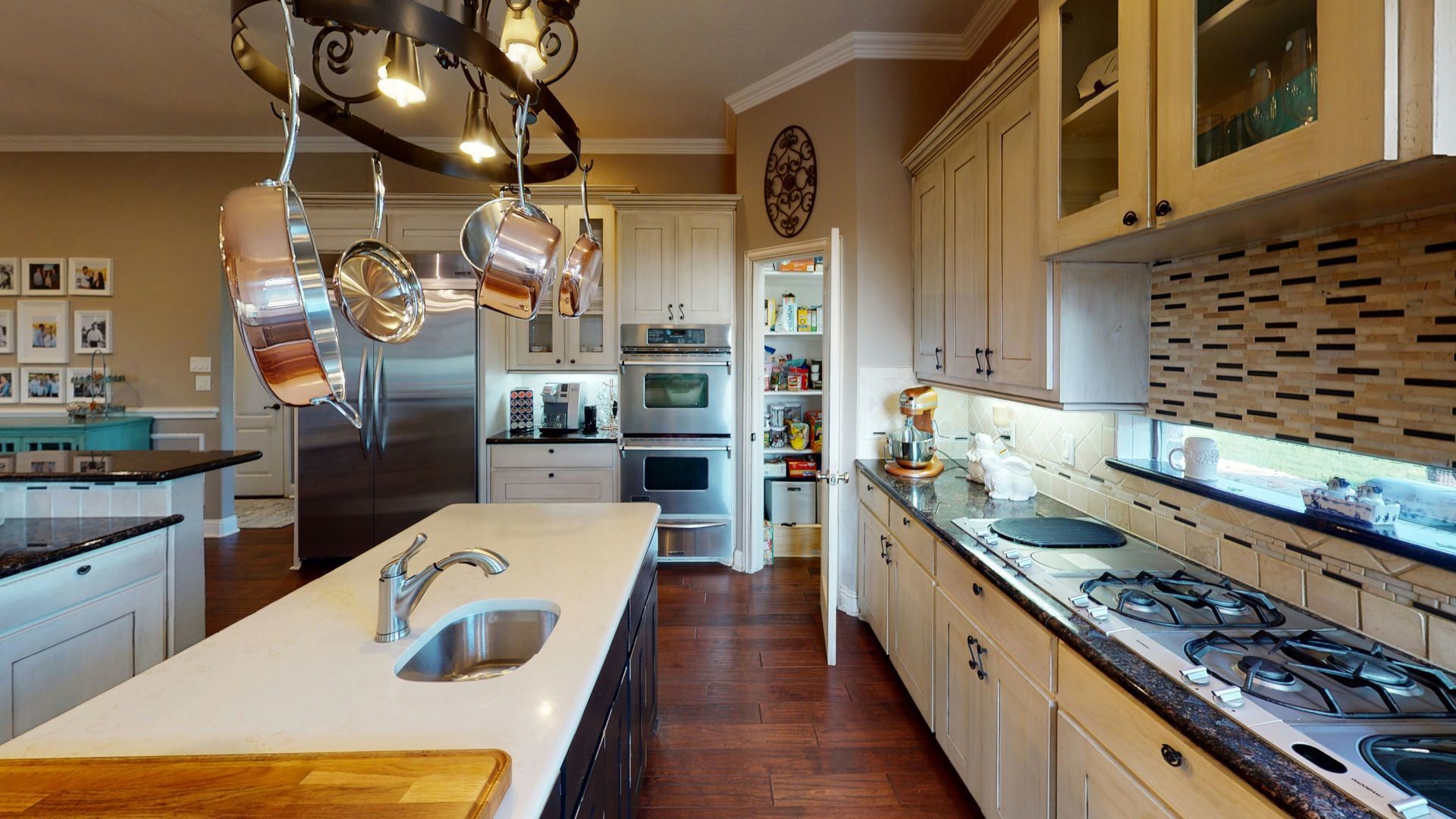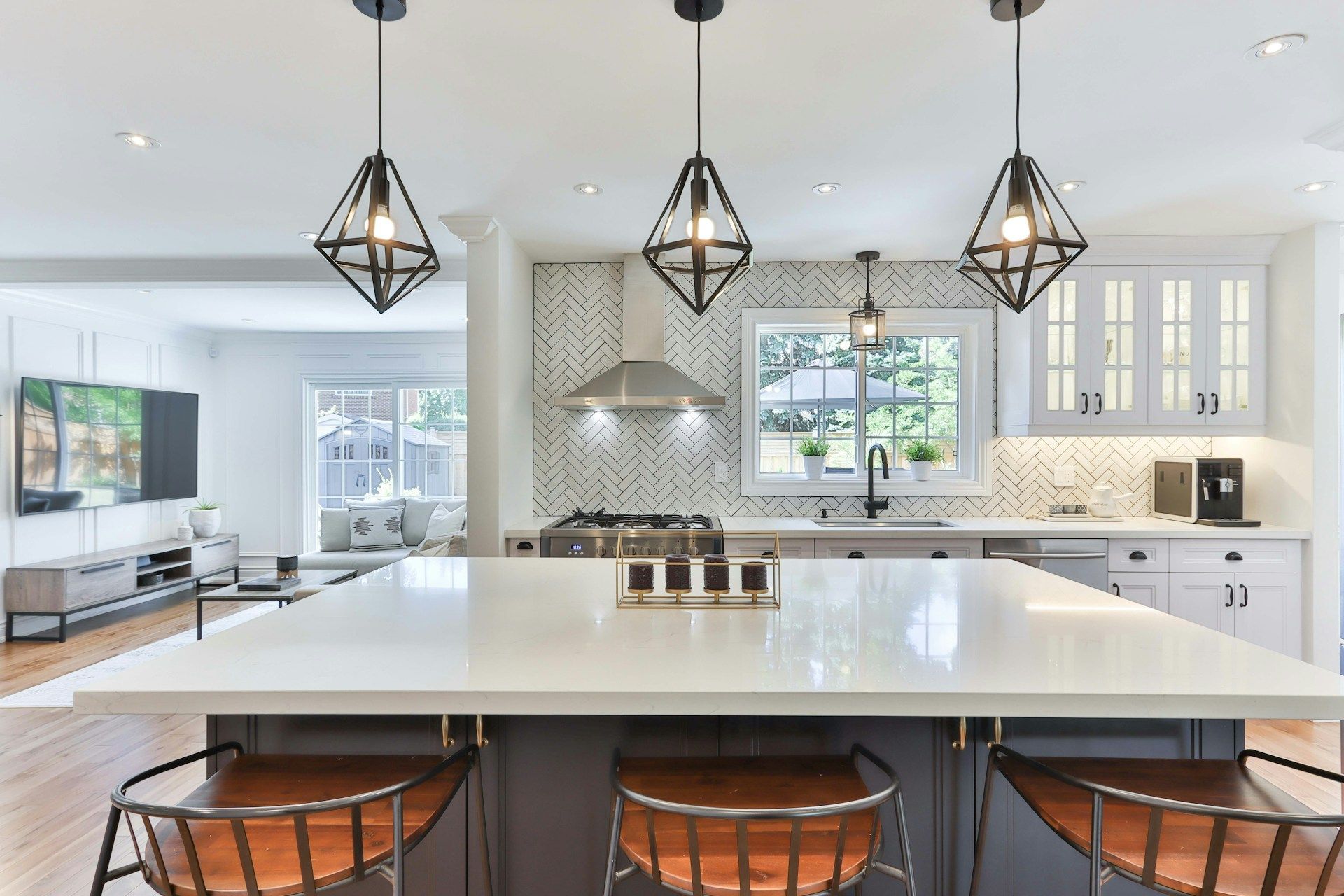Creating a sustainable kitchen involves more than simply choosing eco-friendly materials or energy-efficient appliances. It’s about making mindful decisions that minimize your home’s environmental impact while promoting efficiency and enhancing functionality. Here’s a comprehensive guide on how to build a sustainable kitchen that serves you and your family’s needs and wants.
1. Choose Eco-Friendly Materials
From cabinetry and countertops to flooring, there are plenty of opportunities to choose sustainable materials. Bamboo or reclaimed wood can be used for cabinets, as they are renewable and harvested with minimal environmental impact. Consider recycled materials like glass, paper, or composite quartz for countertops.
Much like cabinetry, sustainable flooring options include bamboo, cork, and reclaimed hardwood. These materials are renewable and/or harvested responsibly, and they are durable and aesthetically pleasing.
2. Energy-Efficient Appliances
When selecting appliances, look for those with an Energy Star rating. Energy-efficient refrigerators, freezers, ovens, and microwaves consume significantly less electricity than their conventional counterparts. Modern dishwashers are designed to use less water and energy, but you can also look for Energy Star-rated dishwashers and consider models with eco-friendly features such as soil sensors and half-load options. Induction cooktops are highly efficient, using electromagnetic energy to heat pots and pans directly, reducing energy waste and cooking food faster. For ovens, consider convection models, which circulate hot air for even cooking and less cooking time.
Aside from built-in sustainability features, you can also reduce energy usage by shopping for appliances that suit your family’s needs. For example, bigger refrigerators draw more energy and may not be necessary for couples or small families.
3. Water Conservation
Install low-flow faucets and fixtures to reduce water usage on sinks and pot fillers. Homeowners who want to keep existing faucets can add aerators to maintain pressure while using less water. If you are installing a new sink, a dual-basin model can help conserve water by allowing you to rinse dishes in one basin and wash in the other.
4. Lighting
To enhance your kitchen’s sustainability, use natural light from large windows, skylights, or glass doors to reduce the need for artificial lighting. If your kitchen lacks windows, reflective surfaces or strategically placed decor can help direct sunlight deeper into the room. Where you do need artificial lighting, use LED bulbs. They consume less energy and last longer than traditional incandescent or fluorescent bulbs.
5. Ventilation and Indoor Air Quality
Eco-friendliness is important for the planet and your family’s health, too! For example, a good range hood improves indoor air quality by venting cooking fumes and excess moisture outside. Additionally, low-VOC (volatile organic compounds) paints and finishes emit fewer harmful chemicals, reducing health risks.
6. Waste Reduction
Though food waste is generally biodegradable, it must be disposed of properly first. You can do this by incorporating recycling and composting stations into your kitchen design. Built-in bins for sorting recyclables and a compost bin for food scraps make it easy to manage waste responsibly. When it comes to cleaning, choose biodegradable and non-toxic cleaning products to reduce environmental impact and your family’s exposure to harmful chemicals.
7. Smart Kitchen Technology
Smart appliances can help you manage energy use more efficiently. They are very on-trend and can help increase your home’s value. Features like programmable settings, energy usage monitoring, and remote control via smartphone apps allow you to optimize appliance operation while being quite convenient!
Building a sustainable kitchen goes beyond appliances and materials, encompassing overall design and functionality features. But with careful consideration, you can create a kitchen that is stylish, practical, and environmentally responsible.
